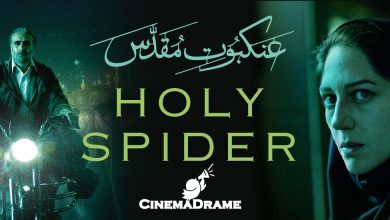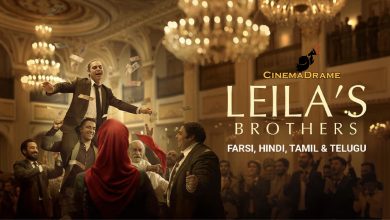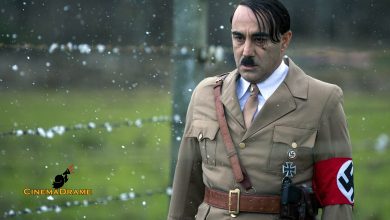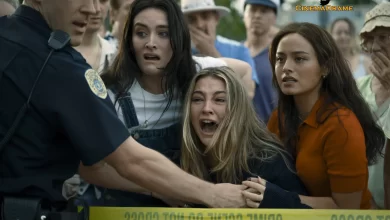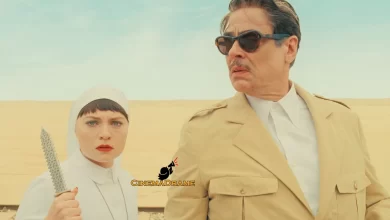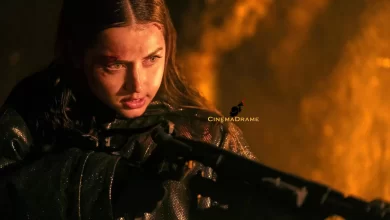Loghman Madayen’s Critique of All Quiet on the Western Front: A Film in Praise of Peace Negotiators


According to cinemadrame News Agency, Loghman Madayen, a film critic, penned an exclusive note on the film All Quiet on the Western Front, writing: The deeply meaningful work All Quiet on the Western Front, directed by Edward Berger and co-written with Ian Stokell and Lesley Paterson—which recently led the Oscars in four categories: Best International Feature, Best Score, Best Cinematography, and Best Production Design—is here for us to critique and analyze.
A film that arrives to point the finger at the sanctuaries that have always followed the government in power, that declares how fascism gathers passionate youth from within places of worship under the pretense of fighting for God, misuses the credibility of religion to serve its sinister goals along the front lines.
It comes to say that there is no difference between the fronts of war—be it the epic poet or the fiery orator, there is always someone to fuel the eager masses with speeches full of sacrifice, then lay a burden of gratitude on the same lives offered up, to justify warmongering policies and mask them as patriotism, without ever being accountable for the politics that pushed the country to the brink of war—leaving the youth to defend it, inch by inch, with bare hands, crossing the border between life and death.
It comes to show how elderly politicians turn pure-hearted young men into sacrifices, crafting a human shield and creating a tragedy, only to later lean on the corpses of these lost talents to build a narrative of victimhood for themselves.
It comes to expose the decayed and vile mindset of opportunistic military commanders, juxtaposed with the helplessness of terrified soldiers who were misled by their own fervor and the manipulation of aged politicians—so that the value of peace negotiators may become evident to awakened consciences.
It arrives to proclaim that there is no glory or mystery in your death—at best, you are a means to a tragic story. It sets out to dismantle the propaganda of war and affirm that each and every war hero stood in full fear up to the moment of death—so much so that even after death, their open eyes still spoke of terror.
It shows that while the soldiers had no dry bread to eat from starvation, those who issued the orders of war sat in safety with access to the finest food and facilities—so detached that they could not fathom the misery of the frontline soldiers or the civilians struggling under the weight of war, and how the strength to fight and endure had run dry.
It comes to say that when the people are starving, the fighters are drowning in death, and the country is crumbling in a crisis with no cure, no food, and no money—and only the warmongering commanders profit—then the one who takes the first step toward peace, even if signing a paper not entirely in his nation’s favor, who only aims to stop the bloodshed and save innocent lives, is the true national hero.
Once we realize that the film is based on a novel of the same name by Erich Maria Remarque, but is not loyal to the text, we understand it was created with the intention to speak out—and naturally, for its creators, the message mattered more than cinematic standards.
The opening scene says it all—a German soldier, desperately trying to hold off a French assault, watches his comrades fall one by one. He is not concerned whether his bullets hit the target or not—he has abandoned reason altogether, pulls a bayonet from his belt, and charges into the enemy trench, stabbing his opponent in the heart. A soldier who went to war for ideals is now using every ounce of energy just to survive.
The film’s early minutes are masterfully drawn. We see an image of a mother fox and her cubs, finding a safe enclosure amidst the cold, seeking refuge from suffering.
From this opening, several key messages become clear. The fox symbolizes an invitation to broaden our perspective in life—to walk the earth instead of dreaming in the sky, to show us that truth is far from fantasy, and to affirm that every problem, however tough, has its own solution—and that the knot can be untied.
Just like World War I, which we witness a slice of in the film—we see how when there is a will to end it, peace takes form, and how enthusiastic youth become horrified by the grim reality of war compared to the fantasies they imagined.
The film is not short on strong opening sequences, such as when we see a sliver of light emerging from the depths of a dark, cold forest—as if to say that in the lowest days of war, when the law of the jungle rules and one must kill or be killed, the light of peace can still overcome darkness.
The main plot of the film revolves around a negotiator who tries to convince his superiors to end the war, but military generals—willing to wade through rivers of blood to achieve their desires—oppose him.
Yet this main plot is so weak that the audience perceives it as a subplot. The writer, in a clear misstep, has overemphasized the subplot of the soldier Paul to the point of neglecting the central narrative—and even within that subplot, character details are poorly conveyed.
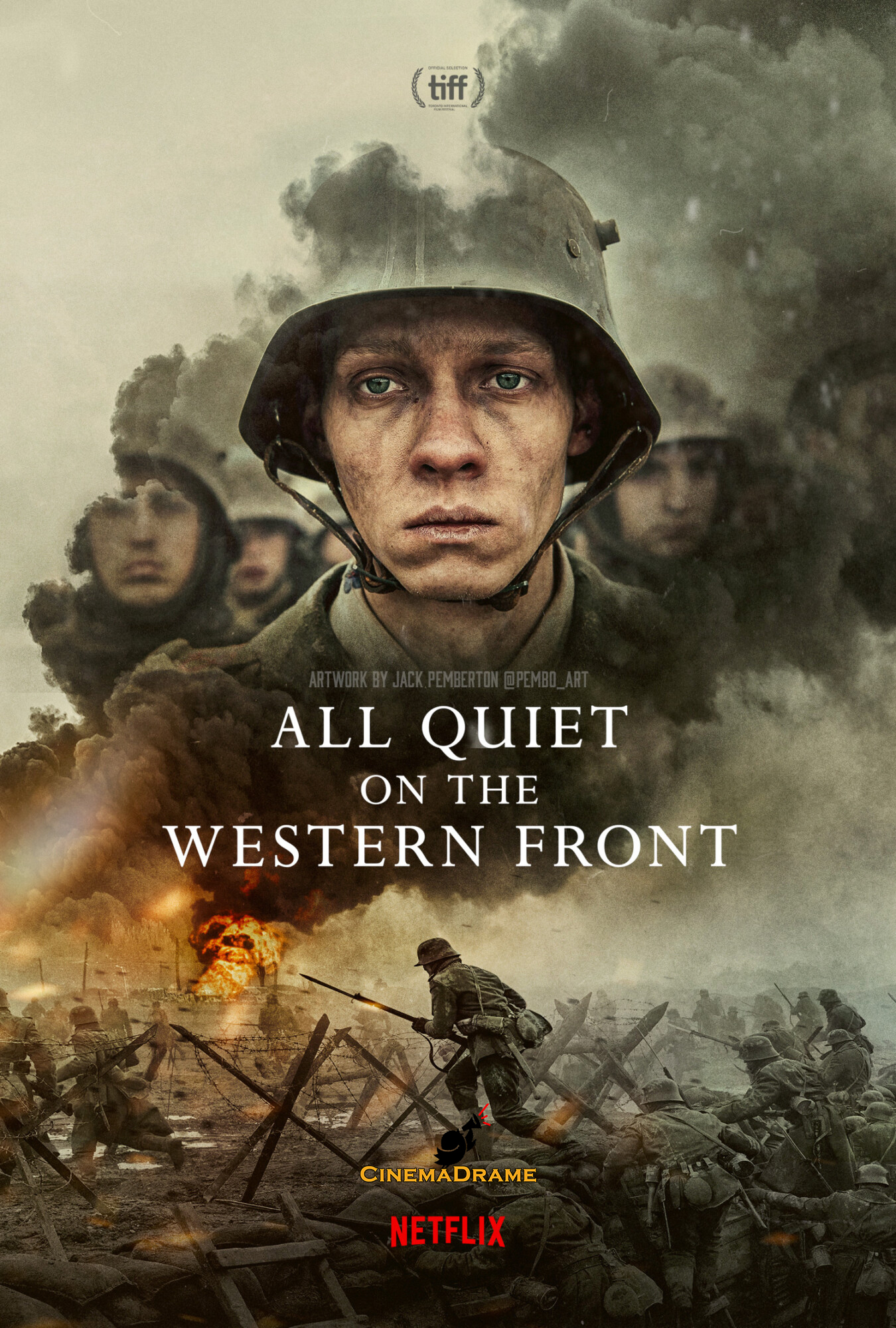
The first turning point comes thirty minutes in, when a list of the many dead reaches Matthias Erzberger, who uses these names as evidence to persuade the army’s high command that the war must end at all costs.
The film’s climax arrives when General Friedrich gathers the soldiers and reveals his grim plan—to prepare them for a fifteen-minute attack, so that by the time the French border is breached, peace will be declared.
The second turning point occurs when Paul is killed just seconds before the 11:00 a.m. ceasefire, marking the end of the war and the return to normalcy.
The connecting symbol throughout the film is the soldiers’ dog tags—each time one is collected, a friend’s corpse is found. Counting them creates the long list that Matthias Erzberger uses to push for peace.
Eloise’s scarf—the keepsake left by the French lover Franz briefly meets—changes hands several times throughout the war, carrying the scent of life. Though a symbolic element, it cannot be called a connecting motif since it doesn’t directly impact the main plot or the hero-antagonist dynamic.
The hero of the film is Matthias Erzberger, the senior peace negotiator. Upon seeing the sheer number of the dead, he loses sleep, dedicating himself fully to stopping the human catastrophe. In the end, by signing a paper that history will regard as his death warrant, he puts an end to the war.
The film’s villain is General Friedrich—who seeks to paint himself as a victor by riding on the blood of the young, turning them into cannon fodder, unafraid of the rising death toll, stoking flames of rage to obstruct the path of the peace negotiators.
The screenplay’s dialogue is dry and obscure, yet not overly simplistic. It flows, but does not build character. It reveals little of customs, tone, or dialect. The writer often steps in to untie narrative knots and reveal information—rarely pushing the plot forward, and unfortunately, it lacks conflict.
Paul begins the film as a counter-value character, eager to conquer France and willing to kill unknown soldiers. But when he falls into a pit with a French soldier and kills him, he’s overcome with guilt and alienated from war. The concept of life is reborn in him, and his view of war changes—turning him into a symbol of virtue.
The screenplay contains several major and minor suspense arcs—some weak, but filled with surprises that startle both characters and audience alike.
For instance, just fifteen minutes before the ceasefire, General Friedrich orders an attack, catching both armies off guard. Or Paul’s death just minutes before the peace. Or his comrade’s suicide after being wounded. Or another friend killed by a peasant boy. Or Paul’s effort to save an enemy soldier in the middle of battle.
The film’s mise-en-scène is exceptional and rightly earned honors at the Oscars. Corpses appear extremely realistic. The trenches, weapons, and shelters are all meticulously designed. From the city to the palace to the battlefield, the film captures the darkness of war superbly.
The makeup design is also striking. It brings historical faces to life, displays seasonal sensitivity on skin, portrays the cutting cold on the thin cheeks of young warriors, and etches wounds, mud, and blood onto faces when needed.
Color and lighting correction is profoundly done—clearly distinguishing city from war. On the battlefield, everything is black and white, life drained out—telling us the spirit of living does not flow there.
In negotiation scenes, we see a blend of white and blue—suggesting a collective intent toward peace. German soldiers wear green, the color of uprising and aggression; French soldiers wear blue, symbolizing order, calm, and peace.
That same order appears in their military management and trench organization. And between them, red bursts forth—from the hearts of unknown soldiers—declaring that in this place, what is lost is not merely a soldier, but a life, a love, or a wasted talent.
The costume design is well-executed, based on in-depth study of the period. Politicians and city folks wear fashion appropriate to the era; soldiers wear historically accurate uniforms. Even the cobblestones are deliberate—showing thorough research into the time.
Though character development suffers from a serious flaw—no character enjoys thorough exploration—and the psychology between antagonist and protagonist is underdeveloped, we see that despite the film being German, it borrows from Rollo May’s archetype of the “warrior” as conceived in post-narcissistic mid-20th-century America: a single man of principle, Matthias Erzberger, who courageously upholds justice and order amid chaos.
One of the film’s strengths lies in the actors’ performances. From background extras to the main hero, each appears full of life and meaning. Their acting conceals the screenplay’s weaknesses from the general audience.
They speak with authenticity, move with freedom, and align voice and body. They draw from the aesthetics of physicality, deliver energy appropriate to each scene, master their lines, and articulate every word sincerely—with accurate pitch and appropriate dialect.
They perform intricate actions—eating, smoking—to avoid idle moments. Their facial expressions match the scene’s needs. They avoid repeated patterns and aim to give dimension to the underwritten characters, living the role as their own.
The director reveals his brilliance in the geometry of each frame. He knows when to move the camera and when to hold it still—like when he matches the rhythm of a sewing machine to the wheels of a military vehicle, suggesting that the war cycle is endless, taking in the living and returning only an empty uniform.
Or when he traps a butterfly in a glass jar in the soldiers’ infirmary—to say that their lives, like that butterfly’s, are short-lived unless a force greater than war shatters the glass and sets them free.
Or when he places hero and villain in the same vehicle and frame. Or buries a frontline soldier under mortar rubble—to question how a man trapped himself can protect others?
Or when two characters are shown sitting on toilets, reading letters from home—highlighting the clash between war and their personal lives.
Or in the final scene—Paul, in his dying breath, walks from the darkness of war into the light of peace. Or when nationalist elders are shown inciting young men to war, parading them like pawns for their own pride.
Or when General Friedrich is shown eating bloody liver and meat—signifying his bloodthirsty nature. And finally, the closing shot of a standing pine forest—a symbol of the millions who died in World War I.
Every necessary sound in each scene is carefully chosen—like the sound of dogs fighting in the air, chaos mirrored on the ground.
Yet the director falters in arranging scenes and shots. He fails to maintain rhythm, and with an unrefined screenplay, a sense of disjointedness emerges.
The editing is amateurish—it stylizes the film too much, needing more cuts, omitting repetitive scenes, which leads to a tedious rhythm.
Still, we witness a masterful score. Each piece serves a purpose, never repetitive—supporting moments of near-death, trauma, or awakening, and lending emotional force when characters experience the devastating impacts of war.

